|
Tom Pypker is an Associate Professor in the Department of Natural Resource Science at Thompson Rivers University (Kamloops, British Columbia, Canada) What does ecohydrology mean to you?
For me, ecohydrology represents an area of research that has been going on for a long time, but over the past couple of decades has been recognized as an area to focus our research. My research interests have always gravitated toward understanding how disturbance from humans or other natural elements interplay with water. By looking at that interaction, we gain much insight into how ecosystems both shape and are shaped by hydrology. What are your undergraduate and graduate degrees in? Oregon State University (2005) Department of Forest Science PhD Forest Ecology – Micrometeorology and Ecohydrology University of Northern British Columbia (2001) College of Science and Management MSc – Natural Resource and Environmental Studies – Carbon sequestration McMaster University (1997) BSc (Hon.) Geography and Environmental Science How did you arrive at working in/thinking about ecohydrology? In my undergraduate degree I was fascinated by courses in micrometeorology that were taught by Dr. Wayne Rouse at McMaster University. This led me to a MSc research project under Dr. Art Fredeen at the University of Northern British Columbia looking at carbon sequestration in sub-Boreal clearcuts using micrometeorological techniques. I was interested in pursuing more micrometeorological research, so I moved down to Oregon to work under Dr. Mike Unsworth and Dr. Barb Bond at Oregon State University. It was a great supervisory team as Mike provided me with the micrometeorology support and Barb provided me with insights into plant physiology. There I pursued a project investigating the importance of epiphytes on the ecohydrology of Douglas-fir forests. I think having the support and encouragement of wonderful supervisors throughout my career is the main reason I became interested in the interaction between plants, water, and carbon sequestration. What do you see as an important emerging area of ecohydrology? I am very interested in the connection between above ground interactions and belowground processes. How organisms change water chemistry and inputs in the soil will alter resource distribution for belowground organisms and root uptake. This may alter what the plants bring up from the ground and create a feedback loop. I think science is evolving to better connect above and below ground processes. Do you have a favorite ecohydrology paper? Describe/explain. I can’t say I have a favourite, but I am always interested in papers that explore the interactions of plant canopies with hydrology. What do you do for fun (apart from ecohydrology)? I try to spend as much time with my family. I enjoy all things outdoors. In the winter I am skiing and, in the summer, I try to hike as much as possible. I am also looking forward to travelling again as COVID (hopefully!) recedes. Todd Scanlon is a Professor in the Department of Environmental Sciences at the University of Virginia. What does ecohydrology mean to you?
My understanding of the term “ecohydrology” has evolved over time. Earlier in my career I mostly associated this term with water-vegetation relationships in water-limited ecosystems, but it has broadened to encompass any research that involves linkages between hydrology and ecological or biogeochemical processes. In truth, this results in quite a bit of overlap between hydrology and ecohydrology because with only certain exceptions can hydrology be studied in isolation from ecological processes. What are your undergraduate and graduate degrees in? My undergraduate degree was in Earth Sciences from Dartmouth College, and my M.S. and Ph.D. were in Environmental Sciences from the University of Virginia. How did you arrive at working in/thinking about ecohydrology? When I first began my Ph.D. work, I was fortunate enough to participate in the Southern African Regional Science Initiative (SAFARI 2000) project. It was a great opportunity to work alongside world-class scientists in a field setting (the Kalahari region of southern Africa), an environment in which the linkages between water availability and vegetation processes are very evident. What do you see as an important emerging area of ecohydrology? There’s a lot of potential for research viewing ecohydrology as an optimization problem. For example, this includes strategies for maximizing carbon gain while minimizing water loss at both the individual and ecosystem levels, how this is expressed at the watershed scale, and how this changes over time with rising CO2 levels, increased temperatures, and altered precipitation patterns. Do you have a favorite ecohydrology paper? Describe/explain. I’ll stick with a classic, by my post-doc advisor Ignacio Rodriguez-Iturbe: “Ecohydrology: A hydrologic perspective of climate-soil-vegetation dynamics” (Water Resources Research 36(1), 3-9, 2000). At least to me, this paper really defined the subdiscipline and laid out a very in influential vision for future research. What do you do for fun (apart from ecohydrology)? I enjoy playing basketball at lunchtime, when I can get to the gym. I have four kids who are involved in a lot of activities, so I do a lot of driving around and watching soccer games. Ana María Restrepo Acevedo is a PhD Candidate at the University of Texas at Austin What does ecohydrology mean to you? Ecohydrology is the instrument to understand the different interactions between the ecosystems, soil, climate, living organisms, and water resources, facilitating the opportunity to predict how these interactions will be shaped in the future based on multilevel measurements and modeling efforts.
What are your undergraduate and graduate degrees in? I have a bachelor degree in Environmental Engineering, from LaSallista, a small private university in Medellín, Colombia. Currently, I’m a PhD candidate at the Jackson School of Geosciences at UT Austin. For my dissertation project I’m trying to understand how different types of ecosystem stresses affect transpiration and water availability for plants. How did you arrive at working in/thinking about ecohydrology? I encountered ecohydrology for the first time in 2015 as an undergraduate student. I had the amazing opportunity to travel to the University of Michigan Biological Station (UMBS) for a non-paid internship during that summer where I learned from numerous exceptional scientists in the field. It was very surprising for me to see what they were doing: Combining engineering skills to build and implement different sensors to measure water movement inside vegetation and scale these measurements to ecosystem levels. Before my internship, I never heard about this potential before, and the idea of applying my engineering expertise in a non-traditional area captive my full interest. After that summer, I decided that I wanted to pursue my graduate studies in this field. What do you see as an important emerging area of ecohydrology? I believe that the coupling of natural and anthropogenic processes is key for the future in our field. Efforts in urban ecohydrology, costal zones interactions, ecosystems transformation, extreme weather events, and other anthropogenic and natural stressors are important to determine the health and productivity of our ecosystems. Moreover, this knowledge could be used for decision-making regarding all the new challenges as we are facing more of the consequences of climate change. Do you have a favorite ecohydrology paper? Describe/explain. It is very hard to pick just one paper when we have a lot of great work in the field; however, there is a paper from He and Silliman (2019) title ‘Climate Change, Human Impacts, and Coastal Ecosystems in the Anthropocene’ that I found very interesting and impactful for the future of our field. The authors addressed the possible interactions between climate change and local human impacts, exemplifying how these interactions might affect major coastal ecosystems. They also addressed conservation strategies that can buffer the climate change effects and identified all the possible climate change stressors for the ecosystems. What do you do for fun (apart from ecohydrology)? I am a very social person and I very much enjoy spending time with fiends. Cooking and hosting game nights for my friends is one of my favorite things to do during the weekends. I love having people over and whenever I had the opportunity, I enjoy cooking and sharing different Colombian dishes such empanadas, arepas, and fried plantain. I have also started making my own sourdough bread – as almost everyone else during the pandemic! Cooking for my loved ones is my way to show all the appreciation I have for them. Xing Li is a postdoc researcher in Research Institute of Agriculture and Life Sciences, Seoul National University, South Korea. Twitter: @XingLi83440245 What does ecohydrology mean to you?
For me, ecohydrology is an interdisciplinary field that explores how ecosystems interact with water. My previous research mainly focused on the carbon cycle, and further understanding of ecohydrology will help me mechanistically explain the behavior of ecosystem carbon-water coupling. What are your undergraduate and graduate degrees in? B.S. in Geographic Information System, School of Geosciences, Chengdu University of Technology, China; Ph.D. in Remote Sensing with a thesis entitled ‘Exploring the response of terrestrial ecosystems to drought based on multi-source remote sensing data’, School of Resources and Environment, University of Electronic Science and Technology of China, China How did you arrive at working in/thinking about ecohydrology? I worked on remote sensing during my master's and first-year doctoral study. At that time, I didn't know much about some terminology, such as carbon cycle, water cycle, and ecology. When I started working on satellite solar-induced chlorophyll fluorescence (SIF) to explore how photosynthesis responded to drought, I found that my knowledge was insufficient to explain some of the vegetation behaviors observed by remote sensing. After several years of paper reading and research, now I have a better understanding of the interaction between ecosystems and climate change. But to present an interesting, solid science story, I still have to work harder to understand more about their interactions among ecosystems, carbon cycle, water cycle and so on. Ecohydrology is an indispensable field for me to study. What do you see as an important emerging area of ecohydrology? At the leaf and canopy scales, the interactions between ecosystems and the environment are relatively well understood. Large-scale investigations using remote sensing still have many uncertainties. Currently, some emerging satellite observations have the potential for studying how plant functioning and ecosystem processes vary over the course of the diurnal cycle. This is a cutting-edge research topic. Diagnosing the diurnal variations of ecosystem processes (such as photosynthesis) can provide insights into direct interactions between ecosystem processes and controlling factors, which otherwise would be obscured by aggregating the instantaneous variables to daily or seasonal scales. Do you have a favorite ecohydrology paper? Describe/explain. One paper from Dr. Benjamin D. Stocker (doi: 10.1111/nph.15123) attracted my attention strongly. They quantified the impacts of soil moisture on light use efficiency across biomes by separating the effect from VPD and greenness changes. Their study reveals substantial impacts of soil moisture alone that reduce GPP by up to 40% at sites located in sub-humid, semi-arid or arid regions. Their findings underline the importance of accounting for soil moisture effects on terrestrial primary productivity in addition to VPD. In subsequent studies, several researchers have disentangled the relative effects of VPD and soil moisture on vegetation productivity. What do you do for fun (apart from ecohydrology)? My life is very simple. Especially since the epidemic, I have spent most of time in the office and dormitory. The only fun for me is cooking. I'm good at cooking traditional Sichuan food (numbing and spicy). Frances O’Donnell is an Assistant Professor in Civil & Environmental Engineering at Auburn University. Twitter: @fcodonnell What does ecohydrology mean to you?
I see ecohydrology as a systems approach to hydrology that considers two-way interactions between water and the physical, biological, and human environment. While this traditionally meant the interaction between water and vegetation, I see the influence of ecohydrology in a lot of creative approaches to researching complex systems involving water and people, animals, biogeochemical cycles, soils, governance systems, infrastructure, and more. What are your undergraduate and graduate degrees in? My undergraduate degree is in Organismic and Evolutionary Biology and my graduate degrees are in Civil and Environmental Engineering with a focus in water resources, so I am very much an ecohydrologist by training. How did you arrive at working in/thinking about ecohydrology? I had two wonderful research experiences as an undergraduate, one working in a plant physiology lab studying water transport in trees and the other writing a senior thesis about the carbon dynamics of forest ecosystems. I applied to graduate programs to continue my work in forest biogeochemistry, but had my application picked up by a new faculty member looking for students to study ecohydrology. I got to do my graduate research on coupled carbon-water dynamics in savannas, connecting my interest in carbon with my roots (literally!) in plant physiology and water. What do you see as an important emerging area of ecohydrology? I think there is a lot of cool stuff going on right now around what I’ll call periodically aquatic environments, for lack of a better term. These are systems like geographically isolated wetlands (which I study) and ephemeral streams that are inundated seasonally or under certain climate conditions. They provide important ecosystem services but are very sensitive to changes in climate and land cover. I’m always interested in topics that force us to question how we subdivide our discipline, and this area of research challenges the traditional division in research between terrestrial and aquatic ecosystems. Do you have a favorite ecohydrology paper? Describe/explain. I really like the old “Wet/Dry Daisyworld” paper. One recurring challenge I’ve dealt with over the years as a researcher is determining how the spatial scale of my analysis of a heterogeneous environment affects my results. This paper gives an elegant mathematical description of the problem that made it “click” for me when I read it in grad school. Baldocchi, D.D., Krebs, T. and Leclerc, M.Y., 2005. “Wet/dry Daisyworld”: a conceptual tool for quantifying the spatial scaling of heterogeneous landscapes and its impact on the subgrid variability of energy fluxes. Tellus B: Chemical and Physical Meteorology, 57(3), pp.175-188. What do you do for fun (apart from ecohydrology)? I love to cook and have enjoyed learning to make the specialty dishes of the many places I’ve lived as an academic. Currently working on my southern bbq skills! Xue Feng is an Assistant Professor in the Department of Civil, Environmental, and Geo- Engineering at the University of Minnesota - Twin Cities What does ecohydrology mean to you?
To me, being an ecohydrologist means being a naturalist at heart. You wonder about how things work when you’re out and about, hiking in the woods, climbing a mountain, paddling a canoe. Ecohydrology has also been an academic refuge for me, where I can use the skills that I picked up from engineering to study the wonders of nature. “Water and ecosystems” seems as big a label as you would want, if you wandered into this field through odd paths. Later, ecohydrology also became a kind of camouflage. You can insinuate yourself into the company of people from all areas of expertise, because so many things in the world intersect with water. What are your undergraduate and graduate degrees in? I have a B.S. in Mechanical Engineering and a minor in Biology from Stanford University, and a Ph.D. in Civil and Environmental Engineering from Duke University. How did you arrive at working in/thinking about ecohydrology? As an undergrad, I spent a lot of time building robots and designing things like battery charging mats for electric cars. At the same time, I also spent quite a bit of time outdoors, backpacking in the Sierra Nevada, or roaming around tropical forests in Australia on a study abroad program. These paths didn’t seem like they could converge until I found “ecohydrology” in grad school – where I could apply the first principles in thermodynamics and fluid mechanics to studying not cars or HVAC systems, but ecosystems. What do you see as an important emerging area of ecohydrology? Since moving to Minnesota, I’ve expanded my ecohydrology lens in two ways: to appreciate the importance of cold climate hydrology (something that I never had to think much about in seasonally dry ecosystems, which was the topic of my Ph.D. and postdoc), and to study ecohydrology in urban settings (which intersects with people’s lived experiences). I’ll elaborate on the first. Snow is a huge part of life and water resources here. It also happens that a lot of these colder, perennially inundated watersheds (that contain peatlands) are transitioning from being a carbon sink to a potential carbon source, so snow hydrology both impacts and is impacted by climate change. Snow and frost complicate the timing of when water is available for plant water uptake. They also mediate how the water table regulates greenhouse gas emissions from these watersheds. It’s a complicated and timely problem. Do you have a favorite ecohydrology paper? Describe/explain. My wonderful Ph.D. adviser, Amilcare Porporato, sent me a paper by Gaby Katul, himself, and Ram Oren titled “Stochastic Dynamics of Plant-Water Interactions” (2007, Annual Reviews of Ecology, Evolution, and Systematics, vol. 38, 767-791) as an introduction to ecohydrology and his particular mode of inquiry. This was me straight out of college, so I didn’t appreciate the depth of the paper at the time, but I’ve since returned to it time and time again throughout my Ph.D. and even now. This paper highlights the different timescales over which plant-environmental interactions can manifest, and the fallacy of averages when it comes to extrapolating plant responses across temporal and spatial scales. These ideas were, and still are, important, when long-term monitoring data are becoming increasingly popular and available, for thinking about how we use these data and what they mean. Even now, when I think about “plant water use strategies” or “optimal” stomatal conductance, I revisit these ideas – to place plant responses in the environmental contexts in which they occur. What do you do for fun (apart from ecohydrology)? To decompress from work, I read, cook, and watch a bunch of TV shows – these also help me stay connected to my extended family in China and Japan. The things that really fire me up are when I get to spend time outside. Since grad school, as a bargain with myself, I make it a goal every year to get unplugged in the wilderness somewhere for a week. The picture above is from when I hydro-geeked out over the Continental Divide in 2019. Jesse Hahm, Department of Geography, Simon Fraser University Photo Credit: Wendy Baxter What does ecohydrology mean to you?
Trying to understand the coupled water and carbon cycles through hydrology-tinted glasses by asking how plants both mediate and respond to hydrologic processes. What are your undergraduate and graduate degrees in? I got a BA in philosophy from McGill University, MSc in Geology from the University of Wyoming, and PhD in Earth and Planetary Science from the University of California, Berkeley. How did you arrive at working in/thinking about ecohydrology? I was very fortunate to be able to pursue my graduate studies with one foot in a geoscience department and the other in an integrated biology department. I also benefitted immensely from being able to work at two different Critical Zone Observatories (the Southern Sierra and the Eel), where field work was being pursued by teams of hydrologists and plant ecophysiologists working together to try to understand the critical zone. I specifically got hooked on ecohydrology when my PhD advisor confronted me with a landscape-scale puzzle: why, in an area of similar climate, did two very different plant communities exist side by side? There was a clue that geology seemed to be important, but it took a lot of digging to understand how rock type was controlling plant water availability in soil and bedrock. What do you see as an important emerging area of ecohydrology? Although we’ve known for decades that plants can use water from bedrock, it’s now becoming clear that this phenomenon is widespread and essential for understanding plant community distribution and sensitivity to drought. A big outstanding knowledge gap is our ability to predict how bedrock water storage capacity varies across landscapes, and why. I’m excited to see the next generation of ecohydrologists combining field datasets with remote sensing and working with geomorphologists and geochemists to advance theories to explain how the subsurface critical zone evolves over million-year timescales. Do you have a favorite ecohydrology paper? Describe/explain. I find myself returning time and again to Scholander and colleagues’ 1965 paper in Science that introduced the now widely used pressure chamber technique for measuring plant water potential (‘Sap Pressure in Vascular Plants’). The ability to measure the tension of the water column inside plants—and relate it to their environment—continues to amaze me. Furthermore, Scholander wrote in an engaging, almost casual style that Is nevertheless precise and credible…I wish I could write like that What do you do for fun (apart from ecohydrology)? Hiking and mountain biking with family and friends (human and canine), gardening, and house renovations. John Van Stan is an Assistant Professor at Cleveland State University in the Department of Biological, Geological & Environmental Sciences Twitter: @Prof_Van_Stan What does ecohydrology mean to you?
To me, ecohydrology means: placing water into Douglas Adams’ “Total Perspective Vortex” (TPV) and sharing the experience. No doubt this requires some explanation ;) The TPV is a fictional invention described by Adams in his “Hitchhiker’s Guide to the Galaxy.” The machine could extrapolate “the whole of reality” from whatever was placed before its lens. Although the scientist in Adams’ book, Trin Tragula, used a crumb of cupcake for his extrapolation, an ecohydrologist would do well to place water before its lens, then stare and share the resulting insights. After all, what doesn’t water contain or sustain in ecosystems? What are your undergraduate and graduate degrees in? I began with a bachelors in Environmental Science and English. Then, I pursued a masters in Environmental Science and Policy and another in Geography. Finally, I earned a philosophical doctorate in Environmental Geography, focusing on how plant canopies intercept, re-distribute, and compositionally alter precipitation. How did you arrive at working in/thinking about ecohydrology? I began in hydrology. Eventually, I felt that the field of hydrology had very little wonder about nature. Instead, it seemed to have a lot of interest in controlling nature - controlling water, at least. Water engineering is important, but ameliorating or preventing water issues requires both engineering solutions and reconnecting our modern communities to a personal interest in water. Believing that the latter comes from sowing seeds of wonder harvested from basic research, I left various water engineering questions behind and began discussing water phenomena with ecologists and biogeochemists and such. We’d chat about phenomena that gave me wonder and caused me to care about understanding water… like how droplets of rain holding onto leaves can shine with an amber glow in the setting sun (i.e., chromophoric dissolved organic matter). These discussions led me to start placing drops of water (usually after they’ve hit some part of a plant) into the Total Perspective Vortex! What do you see as an important emerging area of ecohydrology? I’m very enthusiastic about a certain topic: how plant canopies intercept and route rain, snow, fog, dew, etc. (precipitation partitioning by vegetation). Despite this topic being of great interest to early natural philosophers, like Thales of Miletus, Theophrastus, and Pliny the Elder, we have paid little attention to it since the dawn of modern science (mostly because these interactions are difficult to measure well). But, canopy-precipitation interactions are often the beginning of various paths that precipitation takes through terrestrial systems. Thus, if we get it wrong there, we may propagate our errors into our understanding/modeling of all proceeding water-related natural phenomena. Do you have a favorite ecohydrology paper? Describe/explain. I really enjoyed working through the old paper “Der Wald und die Quellen” from the poet-forester, Carl Eduard Ney. It’s written in old school German and my quest to digest it required help from my German friends (Jan Friesen and Johanna Metzger) and family (mostly my saint-of-a-wife, Stefanie). Ney shares a unique view of early forest ecohydrological measurements and understanding - during a time where technological and numerical capabilities were limited just enough to inspire clever, simple solutions for gaining valuable field insights. Ney was also the first person, in the written record, to start measuring the water that runs down tree trunks (stemflow) during rain, snow, rhyme, and even dewfall. His poetic wonder about nature really comes through! I hope that we in the forest ecohydrological community will remember his contributions. Der Wald und die Quellen; Published by F. Pietzcker: Tübingen, Germany, 1893; https://www.google.com/books/edition/Der_Wald_und_die_Quellen/xOe2Ut4H3r0C?hl=en What do you do for fun (apart from ecohydrology)? I like to write poetry with my sons, make music with other musicians, and record audiobooks… then post them all to YouTube. There is also ample time for doodle snuggles with my doge, Rosco. Achla Jha is a Ph.D. student in the Department of Biological and Agricultural Engineering at Texas A&M University. Twitter: @achlaojha What does ecohydrology mean to you?
Ecohydrology to me is the study of the interactions between the hydrologic cycle and the ecosystems to acquire the essential tools to manage our soil and water resources sustainably, whether in natural, agricultural, or urban ecosystems. What are your undergraduate and graduate degrees in? I earned my bachelor’s degree in Agricultural Engineering from Junagadh Agricultural University, India. I later moved to the US to pursue my master’s degree in Agricultural Engineering at Texas A&M University, where I continued as a Ph.D. student after my graduation in 2020. I also worked as a Graduate Research Assistant at the Texas Water Resources Institute (TWRI) during my master’s. How did you arrive at working in/thinking about ecohydrology? A hydrologist at heart, I have always been curious about the impact of water on living things. However, my master’s thesis and most of my work at TWRI were primarily focused on water quality. I was introduced to ecohydrology when I started my Doctorate, thanks to my advisor, Dr. Salvatore Calabrese. I have since thoroughly enjoyed understanding the dynamic nature of the hydrologic cycle and its linkage to climate, soil, and vegetation. What do you see as an important emerging area of ecohydrology? I think with our land being subjected to climate change and land-use changes, an emerging area of research would be to study the coupled interactions of the carbon cycle and water cycle with a specific focus on the central role of soils. Interestingly, my current research focuses on developing a theoretical framework that couples the soil hydrologic processes to soil organic carbon dynamics through the dynamics of soil structure. Although hydrology is important as the biota depends on water, one cannot ignore the significant impact of roots, microbes on soil hydrology by modifying the soil environment and its associated properties. Thus, a critical aspect of our study is also to incorporate the effect of changes in soil structure on the activity of the soil microbial communities. Do you have a favorite ecohydrology paper? Describe/explain. That’s a tough question! If I had to pick one, it would be the first paper I read when I started my doctoral research by Laio et al. 2001 “Plants in water-controlled ecosystems: active role in hydrologic processes and response to water stress: II. Probabilistic soil moisture dynamics.” This paper provides an analytical solution of a stochastic ordinary differential soil water balance equation to analyze the vegetation response to water stress. Laio, F., Porporato, A., Ridolfi, L., Rodriguez-Iturbe, I., 2001. Plants in water-controlled ecosystems: active role in hydrologic processes and response to water stress: II. probabilistic soil moisture dynamics. Advances in Water Resources 24, 707–723. doi:10.1016/s0309-1708(01)00005-7. What do you do for fun (apart from ecohydrology)? I like traveling both solo and in groups, which gives me the opportunity of meeting people from different cultures while exploring new places. I also enjoy watching Cricket and Tennis. In my everyday life, I look forward to spending time (virtually) with my mom and my two-year-old niece, Apple, back in India. |
AuthorAGU Ecohydro TC Archives
July 2025
Categories |
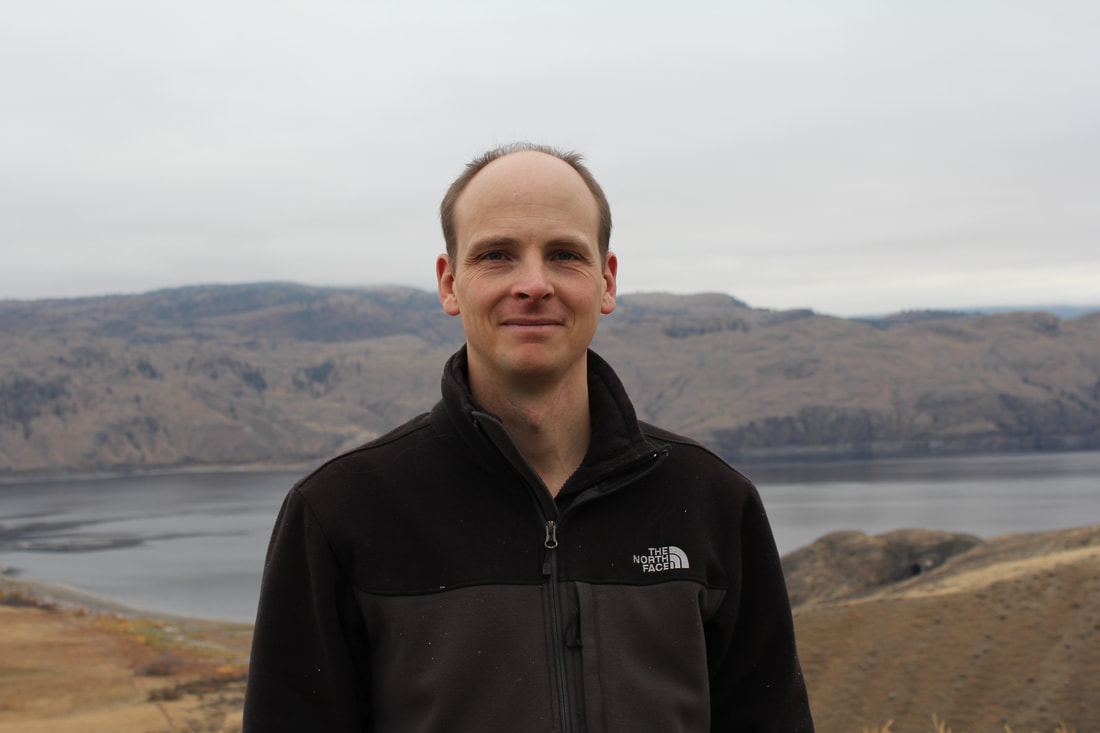
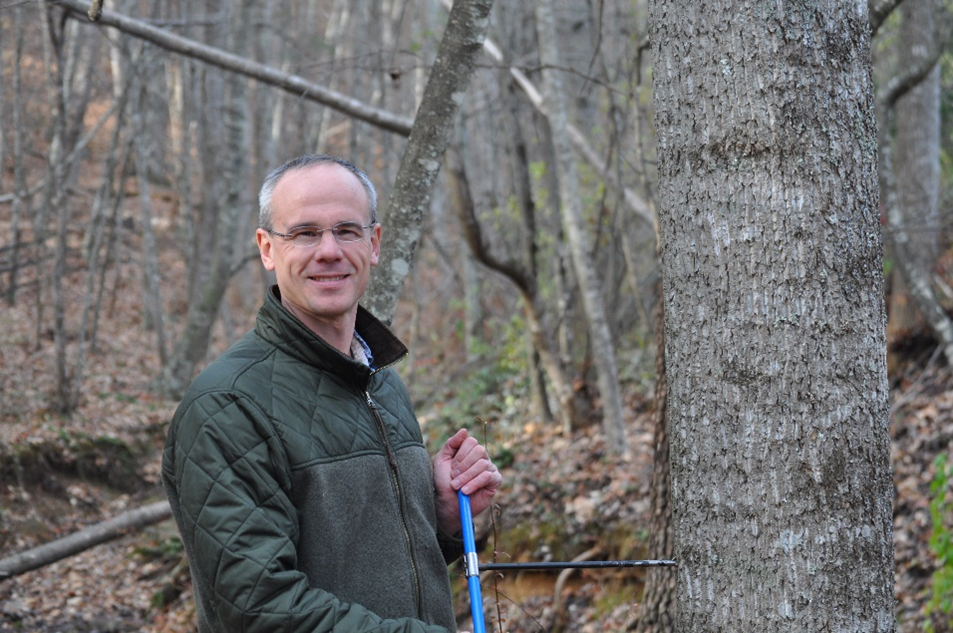
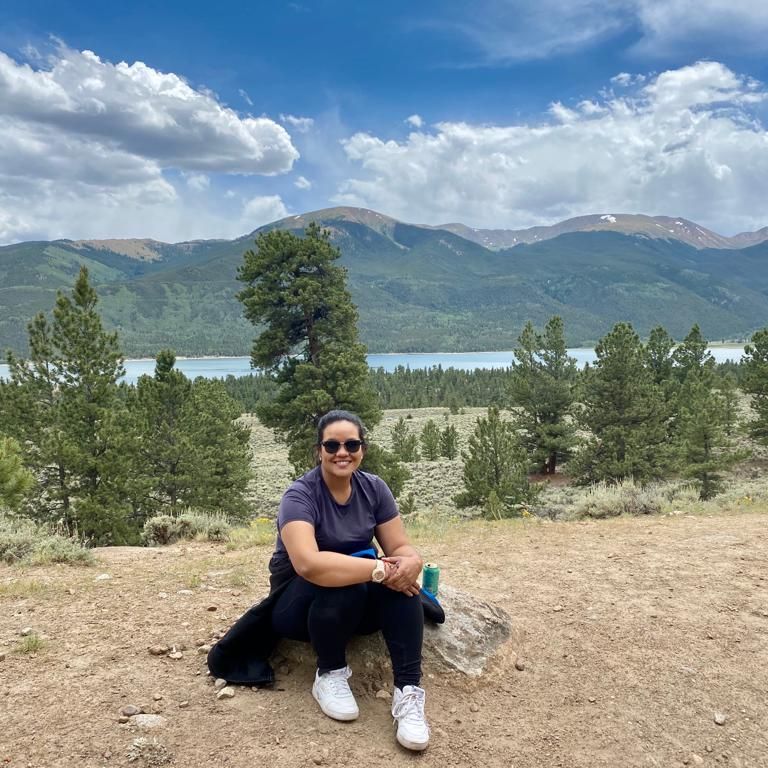

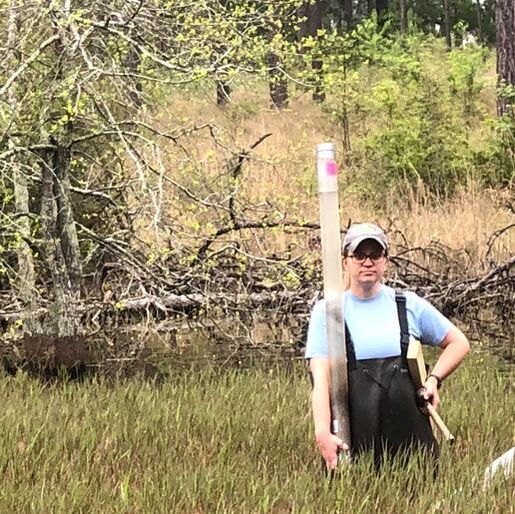
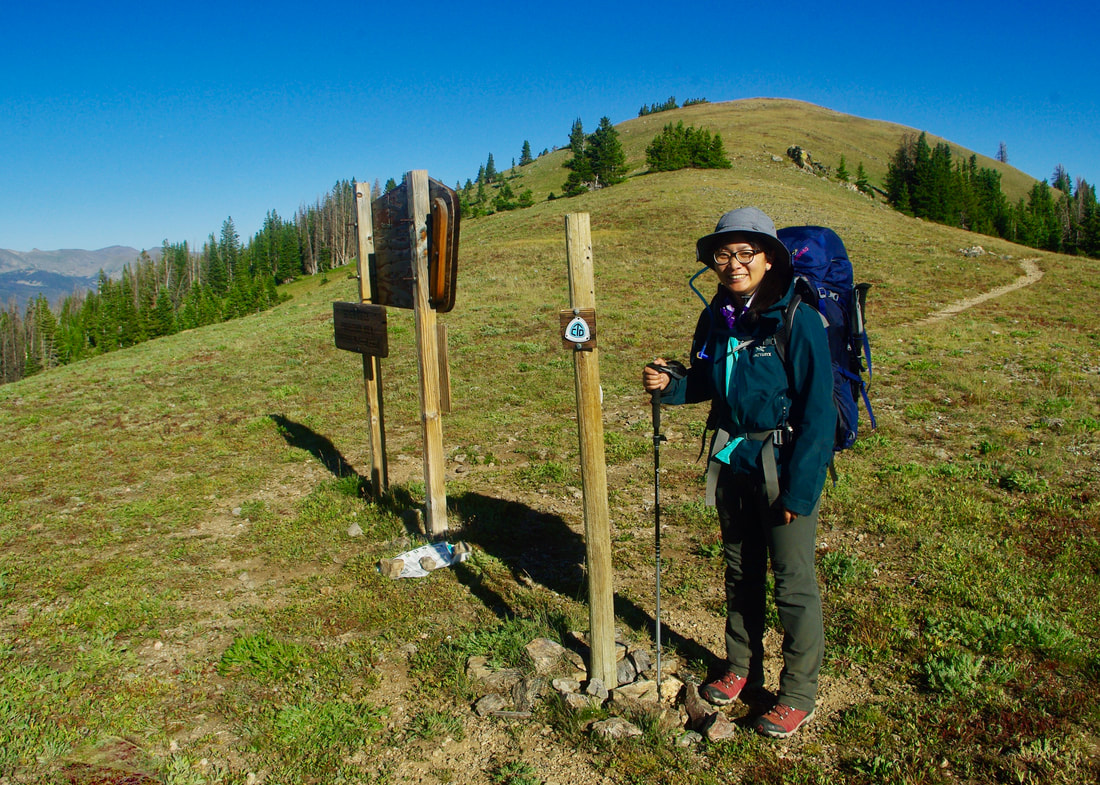
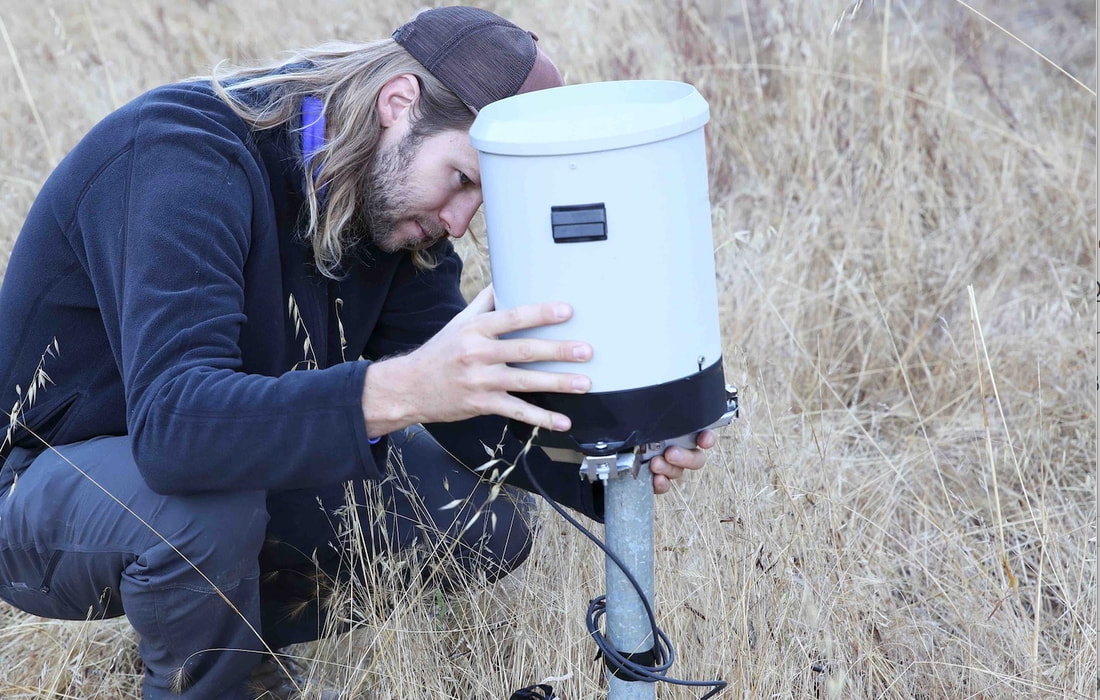
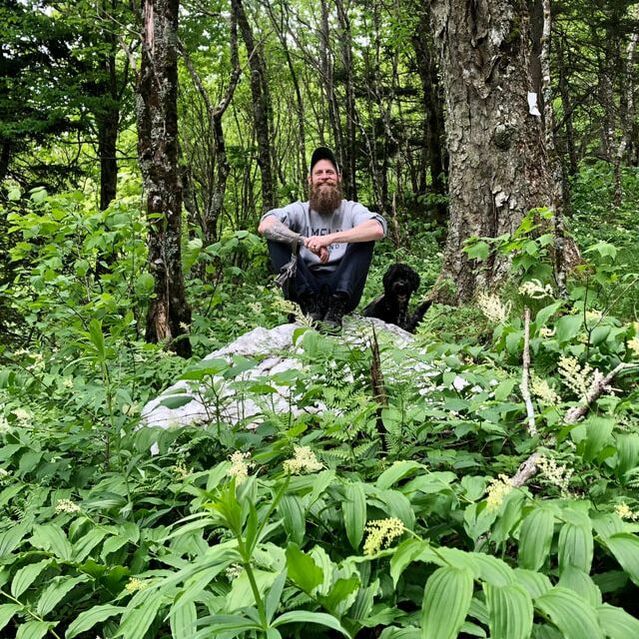

 RSS Feed
RSS Feed